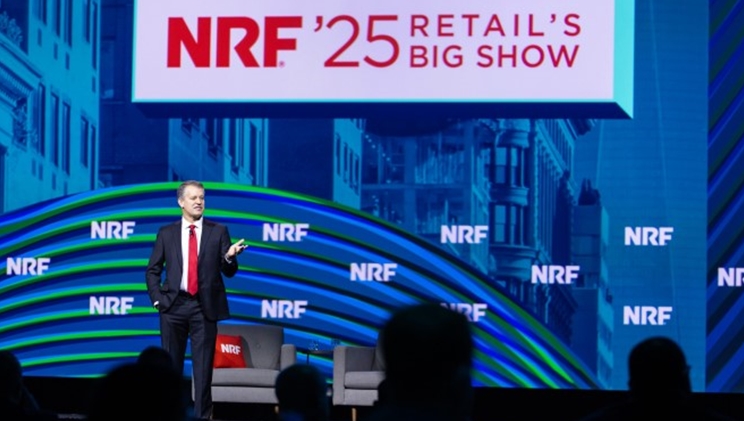Five Key Trends Transforming Retail Following NRF 2025

As the pace of change increases day by day, the retail industry is constantly pursuing innovation to keep up with this transformation. Companies that want to maintain their competitive advantage are feeling the pressure to adapt to rapidly developing technologies more than ever. In this atmosphere, events like NRF 2025 serve as a guide that sheds light on the sector. Bringing together over 40,000 participants, this year’s event was the scene of trends that will shape the future of retail.
While each company’s focus may differ, five critical trends have emerged that have the potential to transform retail as a whole:
1. The rise of artificial intelligence agents (agent ai)One of the most notable themes of NRF 2025 was agentic AI, a new dimension of AI . Unlike traditional AI, agentic AI offers technology that can make decisions on behalf of users and execute multiple tasks simultaneously. This feature takes the customer experience to a more seamless and personalized level.
- Nvidia and Amazon’s pioneering moves : Nvidia introduced its actionable AI shopping assistant model, offering a system that can find multiple products at once with the ability to understand natural language and visual inputs, while Amazon has provided retailers with a comprehensive infrastructure to develop advanced shopping assistants with its “Nova” framework.
- Customer experience and data management : Retail Technology Editorial Director Miya Knights describes actionable AI as “shopping assistants that customers can interact with as if they were having a natural conversation with ChatGPT.” However, the success of this technology will depend on the principles of proper data management and ethical use.
Retail media networks ( RMNs) have great potential in the sector. Walmart’s RMN revenues reaching 30% of its current operational revenues and profitability projections for 2030 have made retail media networks interesting. However, the approach presented by Costco in NRF 2025 revealed that RMNs are not just a profit-oriented model. RMN revenues constitute approximately 2% of Costco’s total sales, while providing close to 75% of its net profit. This clearly shows how much Costco’s business model is dependent on membership revenues and why it attaches so much importance to them. Even the revenues obtained from RMNs are part of a strategy to increase this membership value.
By investing RMN revenues directly into areas that provide customer benefits, such as lowering prices or improving product quality, Costco has demonstrated how these networks can be a strategic tool for building long-term customer loyalty. This approach underscores the need to rethink RMNs as not just an advertising platform but also a vehicle for building brand equity.
3. Digitalization and rebirth of physical storesWhile e-commerce continues to rise, physical stores are taking on a new form thanks to digitalization. According to Deloitte’s NRF 2025 analysis, physical stores are now focused on delivering a smarter, more interactive, and more personalized customer experience:
- Stores equipped with technology : Self-service kiosks and smart checkouts speed up the shopping process, while RFID-based stock management increases product availability.
- Retailtainment wave : The concept of “retail entertainment” has come to the fore with brands like Coach and Foot Locker transforming their stores into experience centers. This transformation aims to increase customer loyalty by turning shopping in stores into entertainment.
NRF 2025 clearly shows that sustainability is no longer a choice, but a necessity. Consumers are increasingly choosing brands that reduce their carbon footprint, transforming sustainability strategies from a mere social responsibility project to a competitive advantage.
- More Efficient Solutions : Energy-efficient store designs, recyclable packaging and sustainable production models are highlighted.
- Less Waste, More Profit : By focusing on reducing waste, brands aim to reduce both their environmental impact and operational costs.
Consumers do not want to see a boundary between physical and online shopping. Omnichannel strategies are becoming an important tool in increasing customer loyalty by ensuring that all channels are integrated with each other.
- Solutions and Innovations : While “Pick Up in Store” and “Same Day Delivery” services are becoming more widespread, RFID and computer vision technologies are enriching in-store experiences.
- Success Stories : Brands like H&M and Tapestry are taking customer experience to the next level by bridging the gap between physical and digital channels with data-driven approaches.
NRF 2025, as an event that reflects the transformation process of the retail sector, presented a critical roadmap to industry players. Trends such as actionable artificial intelligence, sustainability, and retail media networks have the potential to fundamentally change the dynamics of the sector. Retailers who embrace these trends will not only survive, but also consolidate their leadership positions.
Retail Turkey : Five Key Trends Transforming Retail Following NRF 2025
